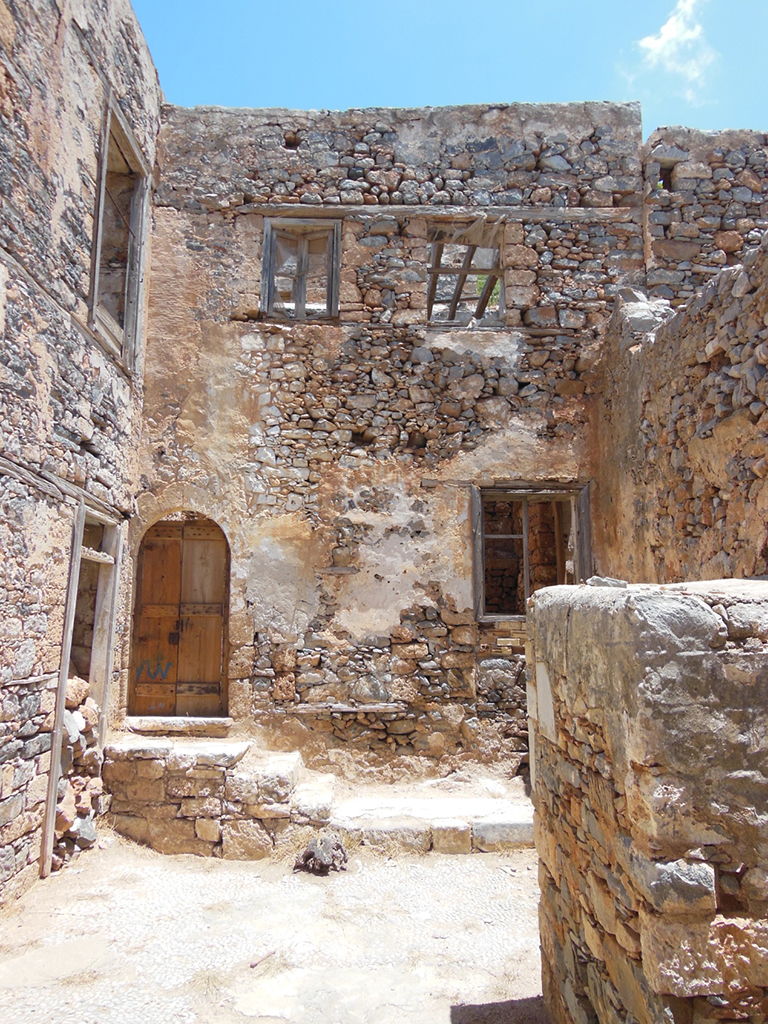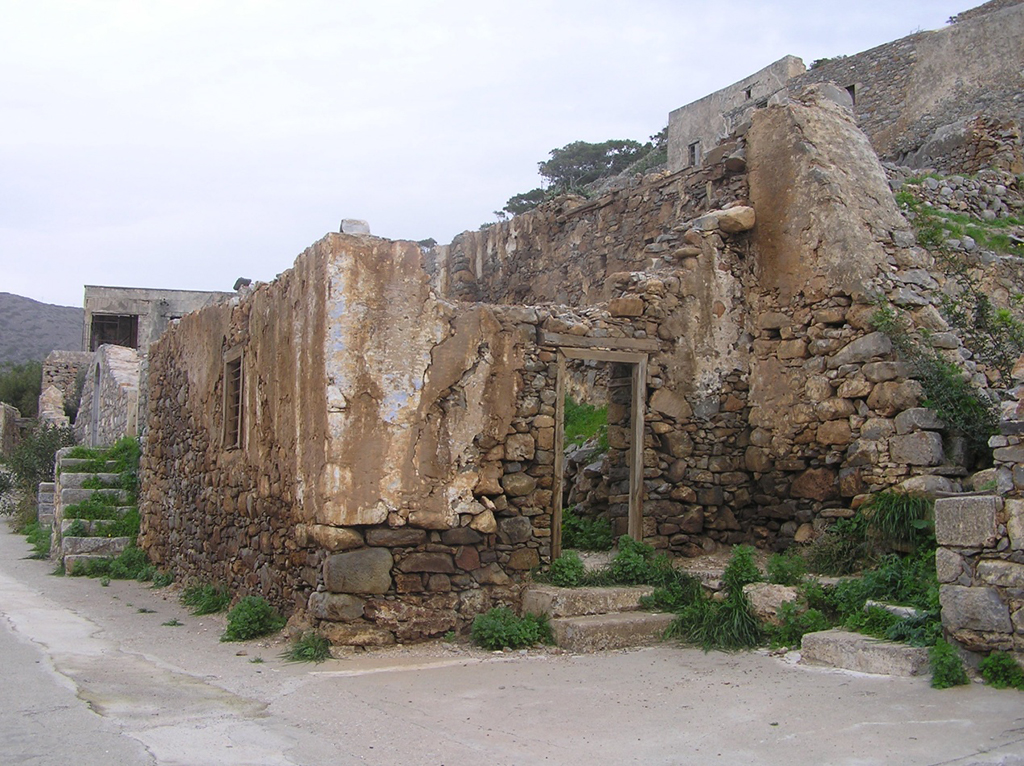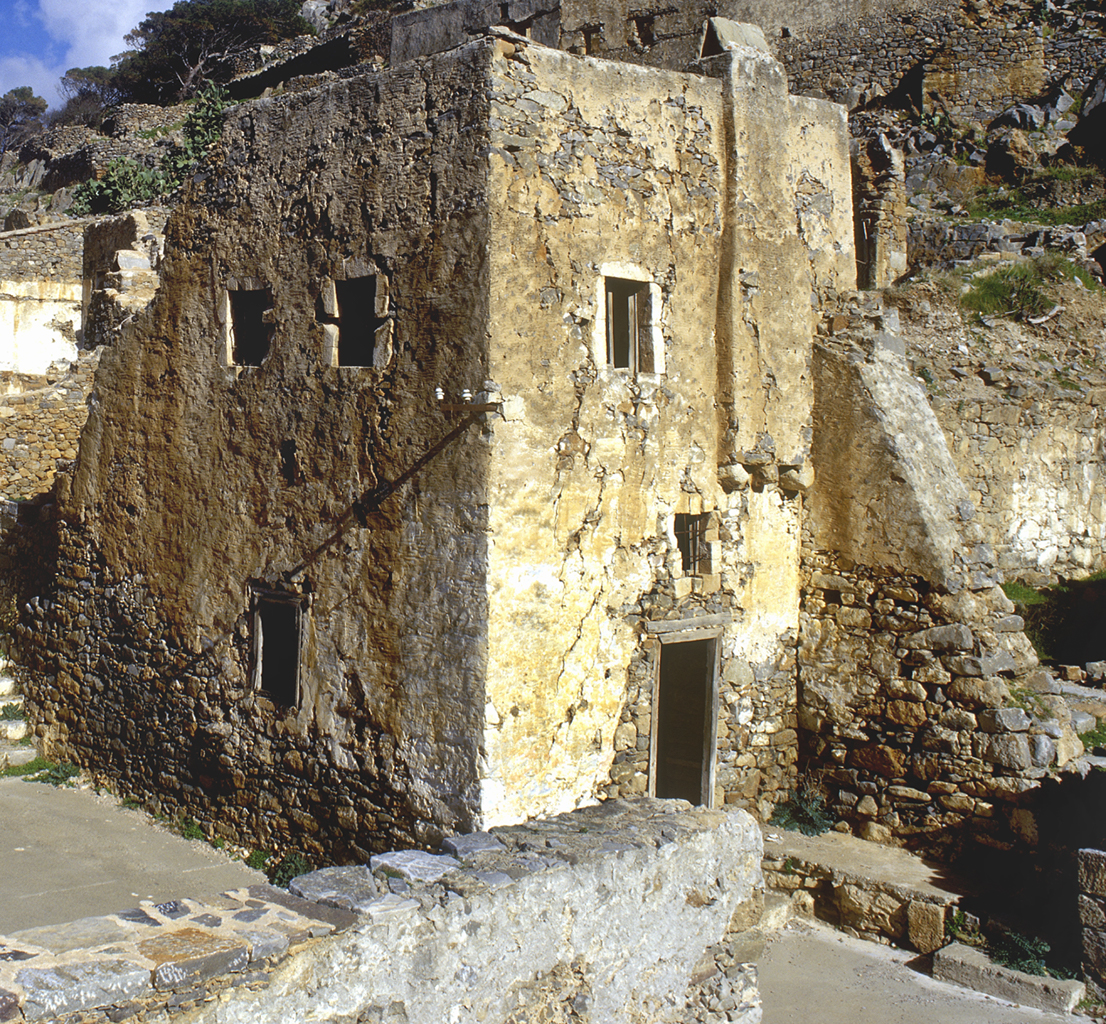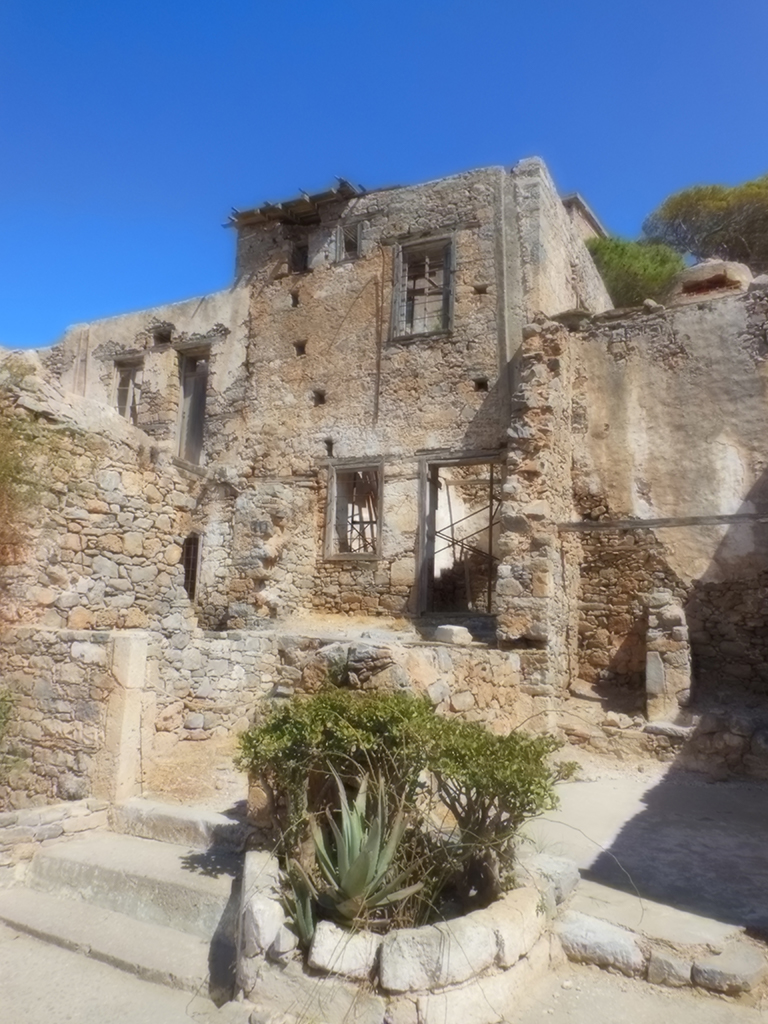Residencies
During the Ottoman period, the houses in the settlement develop stepwise on the entire western and southern side of the island. It is estimated that by the end of the 17th century, the settlement consists of approximately 200 houses, most of them built with extra care, indicators of the economic prosperity of their owners. Today, a few dozen of these houses are preserved, mainly on or near the central road.
A typical Spinalonga residence consists of a two-story building with a courtyard surrounded by high stone walls. There are often various auxiliary buildings in the courtyard, such as the kitchen and the latrine. Many houses also have their own rainwater collection tanks. The mortar-covered drain pipes and built conduits indicate a complex and valuable water-storing system for the arid islet.
The masonry of the buildings is constructed with local stone and covered with "pressed" lime mortar on the interior and the exterior. The use of "tsatmades" (half-timbered construction) is also typical, a type of masonry which consists of a wooden frame with vertical beams and horizontal and diagonal crossbars as supports, of which the between space is filled with lightweight materials.
The exterior plasters often have imprints of the tip of the trowel or the incisions of its sides, known as "mystrismata". The numerous big windows with iron bars or wooden railings and the elaborate frames painted in vivid colours create the buildings' bright interior spaces and cheerful facades. The floors are paved with slabs and the courtyards are often covered with uniform pebbles.
The abundance of houses capable of accommodating the sick is one of the reasons why Spinalonga is chosen to establish the Leper Colony in the early 20th century. The houses are typically separated by the floors and undergo modifications (such as the addition of external stairs or fireplaces for cooking) to meet the needs of the new tenants.






